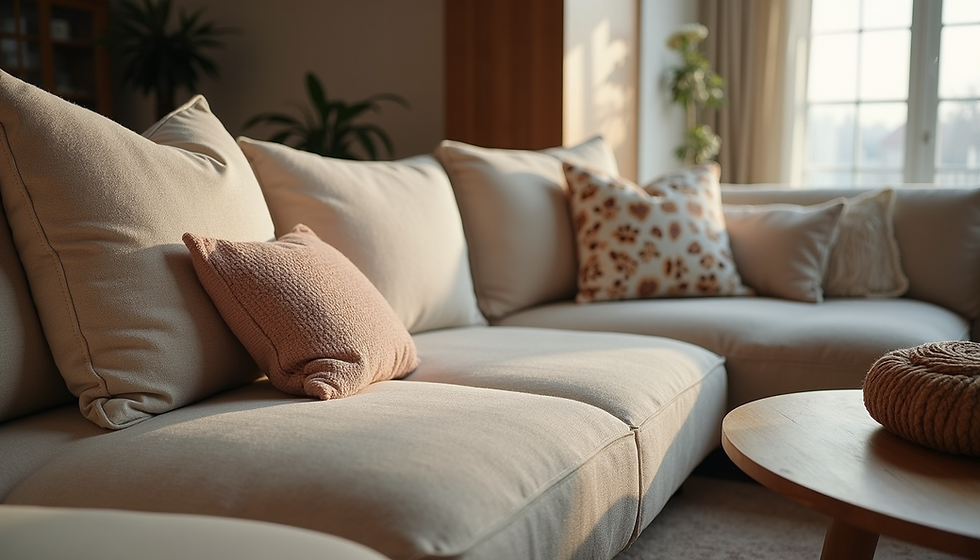Choosing the Perfect Wall Art for Your Space
- Jayant Upadhyay
- 5 hours ago
- 4 min read

When it comes to transforming a room, few things have the power to change the atmosphere like decorative wall art. It adds personality, warmth, and a focal point that can tie your entire space together. But with so many styles, sizes, and materials available, how do you choose the perfect piece? I’ve learned that selecting the right art is both an exciting and thoughtful process. Let me walk you through some practical tips and ideas to help you find the ideal decorative wall art for your home.
Understanding Your Space and Style for Decorative Wall Art
Before you start browsing, take a moment to assess the room where you want to add art. Consider the size, color scheme, and existing furniture. The goal is to find a piece that complements rather than competes with your space.
Room size: Large walls can handle bigger or multiple pieces, while smaller rooms benefit from more modest-sized art.
Color palette: Choose art that either matches or contrasts your room’s colors in a pleasing way. For example, a bright abstract painting can energize a neutral room.
Style: Are you drawn to modern, rustic, vintage, or eclectic looks? Your wall art should reflect your personal taste and the room’s vibe.
For instance, in a cozy living room with warm tones, a landscape painting with earthy colors can create a calming effect. In contrast, a sleek black and white photograph might be perfect for a minimalist office.

What is the rule for wall art?
There are a few simple rules that can guide your choices and help you avoid common mistakes:
Size matters: A good rule of thumb is that your art should cover about 60-75% of the wall space above furniture like sofas or beds. Too small, and it looks lost; too big, and it overwhelms.
Height placement: Hang art so the center is roughly at eye level, about 57-60 inches from the floor. This creates a natural and comfortable viewing experience.
Groupings: When using multiple pieces, treat them as one unit. Arrange them close together with consistent spacing (2-3 inches apart) and consider using a common theme or color to unify the display.
Balance: Make sure the art balances with other elements in the room. For example, a heavy, dark frame might look out of place in a light, airy space.
Following these guidelines will help your decorative wall art feel intentional and harmonious.
Choosing the Right Medium and Material
Decorative wall art comes in many forms, and the medium you choose can dramatically affect the room’s mood.
Canvas prints: These are versatile and come in countless styles. They add texture and depth without the glare of glass.
Framed prints or photographs: These offer a polished look and can be swapped out easily.
Metal or wood art: These add a tactile, three-dimensional element and work well in rustic or industrial spaces.
Tapestries or fabric art: These soften a room and add warmth, especially in bedrooms or reading nooks.
Think about durability too. If you’re decorating a high-traffic area or a room with moisture like a kitchen or bathroom, opt for materials that can withstand those conditions.

How to Incorporate Color and Theme
Color is one of the most powerful tools in decorating. When selecting decorative wall art, consider how the colors will interact with your room.
Monochromatic schemes: Choose art in shades of the same color family for a subtle, elegant look.
Complementary colors: Use colors opposite each other on the color wheel (like blue and orange) to create vibrant contrast.
Accent colors: Pick art that features your room’s accent color to reinforce your design theme.
Themes can also guide your choice. For example, coastal-themed art with ocean blues and sandy neutrals works beautifully in beach houses or rooms aiming for a relaxed vibe. Botanical prints bring nature indoors and suit almost any style.
If you’re unsure, start with neutral art and add colorful accessories like pillows or rugs to test how colors work together.
Practical Tips for Hanging and Arranging Decorative Wall Art
Once you’ve chosen your perfect piece, it’s time to hang it with care. Here are some tips to make sure your art looks its best:
Use proper hardware: Heavy pieces need sturdy anchors or wall hooks. For drywall, toggle bolts or molly bolts work well.
Create a gallery wall: Mix different sizes and shapes but keep a consistent frame style or color to unify the look.
Consider lighting: Highlight your art with adjustable picture lights or spotlights to enhance colors and details.
Leave breathing room: Don’t overcrowd your walls. Negative space helps art stand out and keeps the room feeling open.
If you’re renting or want a non-permanent option, consider adhesive hooks or leaning art on shelves.
Bringing It All Together with Wall Art
Choosing the right decorative wall art is a rewarding way to personalize your home. It’s about more than just filling empty walls - it’s about creating a space that feels like you. Whether you prefer bold statements or subtle accents, the right piece can inspire, comfort, and energize your daily life.
If you want to explore more ideas and find trusted sources for beautiful and functional home decor, check out wall art and other resources at Home Decor Haven. They offer practical advice and inspiration to help you make your home truly yours.
Happy decorating!



Comments